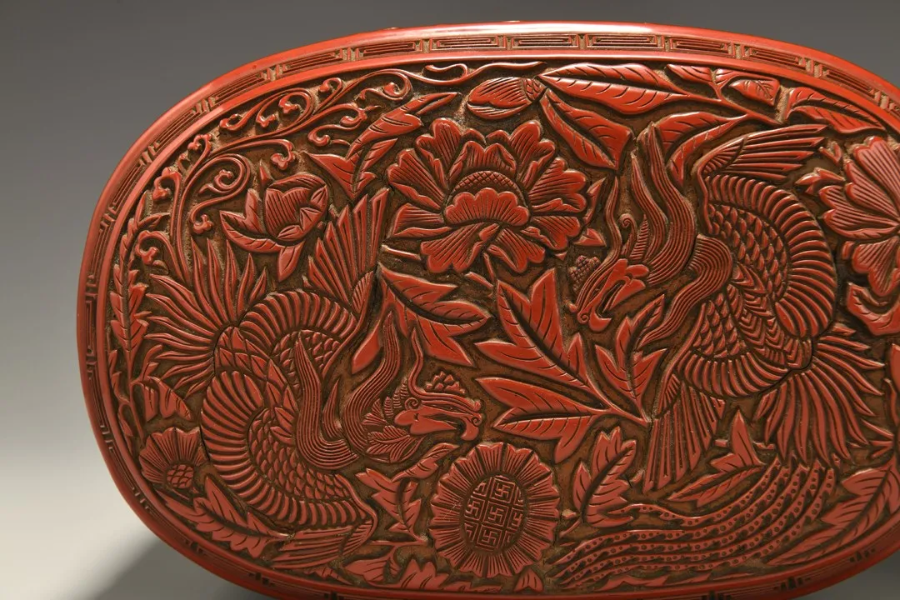

The show begins with a prosperous scene of lacquer making in Jiangsu and Zhejiang provinces, two major production hubs in the Song era. By then, the industry had developed a variety of delicate carving and embellishing techniques for lacquer ware.
The Ming Dynasty (1368-1644) witnessed another height in lacquer making, when more manufacturing centers emerged in South China. And as the imperial capital was relocated to Beijing, the techniques were introduced to the northern region, and studios were established at the court to tailor lacquer objects for the ruling class.
The Qianlong Emperor of Qing is known for his extraordinary tastes in culture. During his reign, lacquer objects with sophisticated patterns became a glamorous spotlight of imperial art. Popular motifs on lacquer ware included clusters of flowers of various species and descriptions from literary classics, which hailed the leisurely lifestyle of scholars.